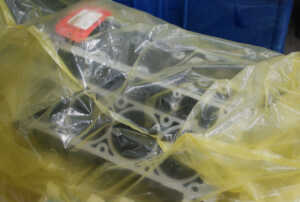Steer Clear of These Boat Materials Due to Corrosion Concerns

Steer Clear of These Boat Materials Due to Corrosion Concerns
Most people have heard the old boater’s joke: “The two happiest days of a boater’s life are when you buy the boat and sell the boat.” Many people feel that boats are, to put it not so nicely, an endless money pit! Some boats may be hard to maintain and repair, experiencing various forms of corrosion. A boat made of low-maintenance materials, and smart usage of Zerust VCI rust protection devices ensure that you spend more time on the water, and less time chasing rust and corrosion issues. Zerust VCI protection can help reduce corrosion, particularly in confined areas such as inside engine compartments, or under protective covers. For example, the mighty Zerust VC6-1 and VC6-2 vapor capsules can protect a radius of 6 feet in an enclosed area, making these a great fit for engine bays, storage compartments, or cabin areas. In fact, a major naval organization had issues with corrosion on navigation devices, bilge pumps, and small engines. Oil and paint was not proven to be effective, but Zerust Vapor Capsules and VCI poly bag material usage showed no new corrosion after a six-month trial period.
Types of Boats to Avoid Due to Corrosion Concerns
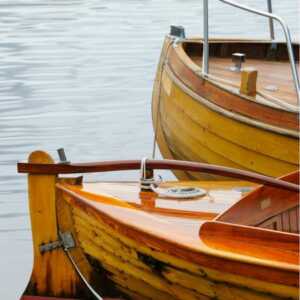 Wooden Boats have historical value and offer classic designs. However, our boat experts don’t recommend wooden boats for the novice boat owner. Marinas may be hesitant to allow a wooden boat, and insuring might be more difficult. Cleaning and sealing is needed to ensure that the wooden hull and deck doesn’t rot due to constant moisture and fungi. Shipworms, small saltwater clams, are known as the termite of the sea, and eat the wooden boat while it’s in the water! The shipworm issue is so large that in the 1800s, a wooden ship could be destroyed in only eight years. Today, copper-infused paint is used to prevent shipworm damage on wooden boats, but painting a boat hull is a labor-intensive, messy, and time-consuming job. Owners report that maintaining a wooden boat can be a full-time job, and we recommend looking at other boat types in most cases.
Wooden Boats have historical value and offer classic designs. However, our boat experts don’t recommend wooden boats for the novice boat owner. Marinas may be hesitant to allow a wooden boat, and insuring might be more difficult. Cleaning and sealing is needed to ensure that the wooden hull and deck doesn’t rot due to constant moisture and fungi. Shipworms, small saltwater clams, are known as the termite of the sea, and eat the wooden boat while it’s in the water! The shipworm issue is so large that in the 1800s, a wooden ship could be destroyed in only eight years. Today, copper-infused paint is used to prevent shipworm damage on wooden boats, but painting a boat hull is a labor-intensive, messy, and time-consuming job. Owners report that maintaining a wooden boat can be a full-time job, and we recommend looking at other boat types in most cases.
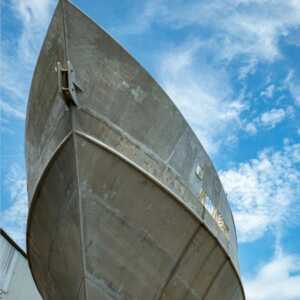 Steel boats are prized for their durability against running into objects without being damaged. Its strength is unmatched, but keeping rust at bay will be a never-ending challenge. Like wooden boats, steel should be painted or coated to avoid corrosion. Fixing rust spots anywhere inside or outside the hull is of utmost importance. We’ve heard that it can be difficult to repair and paint steel boats as paint won’t adhere to the steel hull well without special treatment. Galvanic corrosion is a common problem with steel boats, where aluminum can corrode when attached to the steel hull or other bare metal parts. Protection against electrolysis is another consideration, as the steel boat hull can become energized due to stray current from the onboard power or other nearby boats while docked. Steel boats can be a great fit for certain uses such as icy and rough waters, but for the occasional outing, a steel boat is not the best choice.
Steel boats are prized for their durability against running into objects without being damaged. Its strength is unmatched, but keeping rust at bay will be a never-ending challenge. Like wooden boats, steel should be painted or coated to avoid corrosion. Fixing rust spots anywhere inside or outside the hull is of utmost importance. We’ve heard that it can be difficult to repair and paint steel boats as paint won’t adhere to the steel hull well without special treatment. Galvanic corrosion is a common problem with steel boats, where aluminum can corrode when attached to the steel hull or other bare metal parts. Protection against electrolysis is another consideration, as the steel boat hull can become energized due to stray current from the onboard power or other nearby boats while docked. Steel boats can be a great fit for certain uses such as icy and rough waters, but for the occasional outing, a steel boat is not the best choice.
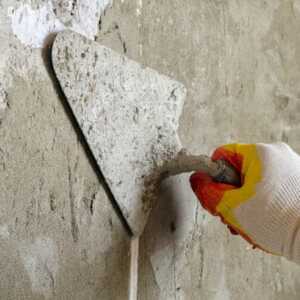 Ferrocement Boats are made of cement and, according to ferrocement.org, are the cheapest and easiest form of construction for boats over 25 ft. long. This type of boat is also called SRP (steel reinforced plaster). Ferrocement boats are steel mesh that is coated in mortar and plaster. Ferrocement boats can be built by amateurs with a minimum of special tools, and this is why these boats have a reputation for being a bad choice in materials, as some boats are poorly built. Some owners have reported low resale value, and difficulty insuring and docking a ferrocement boat due to durability and repairability concerns. Boaters report that there are many great ferrocement boats still in use today, but this material has fallen out of favor due to poor impact resistance, heavy weight, and problematic construction. It is said that the more steel, that goes into a ferrocement hull, the better it is. Given the drawbacks we know about steel boats, this doesn’t sound like the makings of a worry free, low maintenance boat! We recommend leaving these boats to the professionals.
Ferrocement Boats are made of cement and, according to ferrocement.org, are the cheapest and easiest form of construction for boats over 25 ft. long. This type of boat is also called SRP (steel reinforced plaster). Ferrocement boats are steel mesh that is coated in mortar and plaster. Ferrocement boats can be built by amateurs with a minimum of special tools, and this is why these boats have a reputation for being a bad choice in materials, as some boats are poorly built. Some owners have reported low resale value, and difficulty insuring and docking a ferrocement boat due to durability and repairability concerns. Boaters report that there are many great ferrocement boats still in use today, but this material has fallen out of favor due to poor impact resistance, heavy weight, and problematic construction. It is said that the more steel, that goes into a ferrocement hull, the better it is. Given the drawbacks we know about steel boats, this doesn’t sound like the makings of a worry free, low maintenance boat! We recommend leaving these boats to the professionals.
Best Boats Types For Low Corrosion
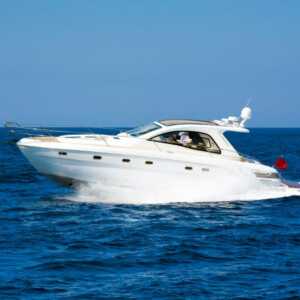 Fiberglass Boats are durable and low maintenance. “Glass boats” are the most common recreational boat material, thanks to their smooth ride, durability, and ease of maintenance. The flexibility of fiberglass means that unique boat designs can be achieved. A more balanced design means better handling and stability. Cleaning, waxing, and gel coat will keep a fiberglass boat looking great, without the labor-intensive paint application of wooden or steel boats. Fiberglass fabric and resin can fix many holes on a fiberglass boat, making repair accessible to the average person.
Fiberglass Boats are durable and low maintenance. “Glass boats” are the most common recreational boat material, thanks to their smooth ride, durability, and ease of maintenance. The flexibility of fiberglass means that unique boat designs can be achieved. A more balanced design means better handling and stability. Cleaning, waxing, and gel coat will keep a fiberglass boat looking great, without the labor-intensive paint application of wooden or steel boats. Fiberglass fabric and resin can fix many holes on a fiberglass boat, making repair accessible to the average person.
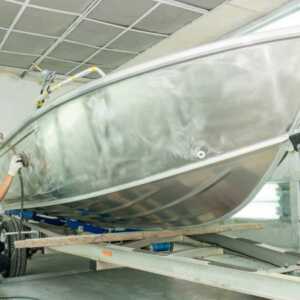 Aluminum Boats are lighter weight than fiberglass boats. The lighter weight translates to better fuel economy when towing and operating, but at the cost of a smooth ride. Many feel that a fiberglass boat is more comfortable with it’s heavier weight, especially in windy areas. However, aluminum boats’ low cost and fuel consumption make them another top choice of materials. Durability of aluminum boats is superior to fiberglass, and they are considered relatively easy to repair. The strength of aluminum boats makes them a good choice for fishing in shallow rivers. Repairability of aluminum boats often requires welding, which takes above-average skill.
Aluminum Boats are lighter weight than fiberglass boats. The lighter weight translates to better fuel economy when towing and operating, but at the cost of a smooth ride. Many feel that a fiberglass boat is more comfortable with it’s heavier weight, especially in windy areas. However, aluminum boats’ low cost and fuel consumption make them another top choice of materials. Durability of aluminum boats is superior to fiberglass, and they are considered relatively easy to repair. The strength of aluminum boats makes them a good choice for fishing in shallow rivers. Repairability of aluminum boats often requires welding, which takes above-average skill.
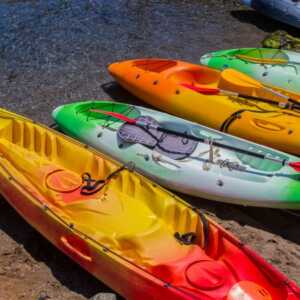 Plastic Boats There are no rust concerns with a plastic boat, except for the high-end plastic boats that include an outboard motor. We’ve heard that plastic boats can be excellent in salt water as they won’t rust or get eaten by worms. Plastic boats are controversial in the realm of fishing boats, as they are often more expensive than the equivalent aluminum boat. If you want a small boat that can be used for fishing, and are easy to store and launch, a plastic boat could be a good choice. Repairability of a plastic boat is variable, with debate over the best patching methods including marine sealants and plastic welding.
Plastic Boats There are no rust concerns with a plastic boat, except for the high-end plastic boats that include an outboard motor. We’ve heard that plastic boats can be excellent in salt water as they won’t rust or get eaten by worms. Plastic boats are controversial in the realm of fishing boats, as they are often more expensive than the equivalent aluminum boat. If you want a small boat that can be used for fishing, and are easy to store and launch, a plastic boat could be a good choice. Repairability of a plastic boat is variable, with debate over the best patching methods including marine sealants and plastic welding.
As you can see, there are many pros and cons to each type of boat. In our opinion, fiberglass and aluminum seem to be the best choice for the new or casual boater, offering efficiency, durability, and repairability. No matter which of these materials floats your boat, engine and propeller attachment points, fasteners, boat lifting eyes, seat rails, steering wheels, door hardware, and more can corrode, especially in humid salt air. We recommend Zerust VCI protection in these vulnerable areas. Depending on the size of the area, our vapor capsules for boats can protect an area of up to 6 feet. This is great for engine bays, outboard motors, interior areas, cleats, lids, compartment doors, and more.
More Blog Entries:
Tips to Prevent Aluminum Boat Corrosion in Saltwater, Feb. 21, 2024, Boat Corrosion Prevention Blog
*************@************ts.com“>Contact Zerust for information on VCI products to help with rust prevention of a range of consumer products by emailing us or calling (330) 405-1965.
- Categorized: Rust Prevention Tips

